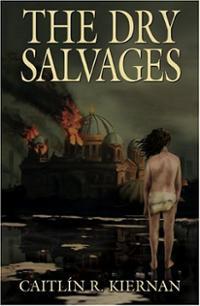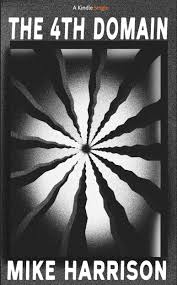4) ‘The Queen of Erewhon’ by Lucy Sussex
We’re in the post-apocalyptic world of the Crash. An anthropologist, or ‘story eater’, from the north has travelled to a town in the Highlands of Suff to observe a court case that has ‘brought everyone down from the mountains and into the valley’:
When I woke, I tested my tape recorder – a precious thing, not because it was a genuine Tech artefact, but because it was a copy, its workings painstakingly rediscovered. Of course, it wasn’t as good, nothing was, for we would never be as rich, nor as spendthrift, as our forbears. For over a century now, since the Crash, we had been adapting to an economy of scarcity. It was the adaptations, rather than the antiques, or the neo copies, that interested me – particularly the Rule Houses, and at their centre, the Queen Polly Andree. How would it feel, to have multiple husbands? And what would happen if you grew tired of them?
The court case the has brought everyone into town concerns two women, Sadry and Idris, who have chosen to reject the system of polyandry that holds sway in the southern highland settlements – they want to live together as a lesbian couple.
Our oldest book, though, isn’t medical – it’s called Erewhon, but it’s not about my House, but a dream, a nowhere place. In this book things are reversed: the sick are criminals, and the criminals regarded as ill.
Idris: Are we criminal, or ill?
Bel: Both, probably, in the eyes of the men.
Sadry: The book Erewhon seemed strange, but not much stranger than the Rule. Or the way I would live in my house, with Idris, if the court permits us.
Sussex evokes her world and its complex webs of social relations with vigour and skill. I can see why this story is important, and as a fine example of a particular kind of polemical science fiction it belongs in this anthology, absolutely. But for me personally the didactic style of ‘The Queen of Erewhon’ proved a bugbear. Also, I have a pet peeve about the way so many writers insist on saddling their post-apocalypse worlds with vast strews of capitalised proper nouns: Rule, Queen, House, Crash, Scavengers, Tech, the list goes on. You find this in everything from The Chrysalids to The Bone Clocks and it has become distinctly tiresome. Perhaps I’ve just read too many post-apocalypses, but it’s amazing how much more convincing and more contemporary said texts instantly become, simply by replacing these annoying capital letters with their lower case equivalents.
I admired ‘The Queen of Erewhon’ for its directness and for the skilfulness of its arguments, and although it’s not a story I warmed to personally, it fits right in alongside texts such as Margaret Atwood’s The Handmaid’s Tale and Sarah Hall’s The Carhullan Army and should be similarly appreciated.
5) ‘Tomorrow is Saint Valentine’s Day’ by Tori Truslow
This story is many things: Chapter 7 of a fictitious biography of one Elijah Willemot Wynn, a delicious feminist inversion of Hans Christian Andersen’s ‘The Little Mermaid’, a starred-First-calibre example of New Weird aesthetic.
We enter a world where the Moon is populated by mer people. You can get there on the Great Ice Train:
We stood shivering in our thick coats on that desolate northern platform… the train rose out of the water like a ghost. We stood, gaping idiotically at it – but not Elijah. He mounted the step and strode into the carriage. Emboldened, we followed – several slipped and fell on the frozen steps, but at last we were all aboard. I had followed Elijah into the first carriage. Directly before us was the captain’s car, completely filled by the intricate engine, pipes connecting jars and tanks of strange half-substantial things. The sea glowed all around us… we gazed up through the ceiling to our destination and felt a queer tug as the Moon opened her pores.
In some cases you need to be kissed by a mermaid to survive the journey. You can fall in love with a mermaid, but you can’t have a sexual relationship with one because that way lies madness. Also, it just doesn’t work out biologically. The mer-moon is altogether not a sensible place for a human to be.
Wynn’s ‘biography’ is substantiated with all manner of secondary sources: poems, extracts from treatises on ‘modern faery studies’, contemporary memoir, poems. I’m a total sucker for this kind of compendium narrative, and Truslow’s invented secondary sources are of the very best kind in that they never read like Victorian pastiche. Rather, they feel disconcertingly authentic, the kind you’ll feel tempted to Google, just in case…
The language of this story is sumptuous and sparkling. More than that, the story as a whole seems boundary-less, in that it hints at a whole world beyond the page, one that is so skilfully evoked that suspension of disbelief is effortless.
There is not one thing about ‘Tomorrow is Saint Valentine’s Day’ that I didn’t love. Glorious.

